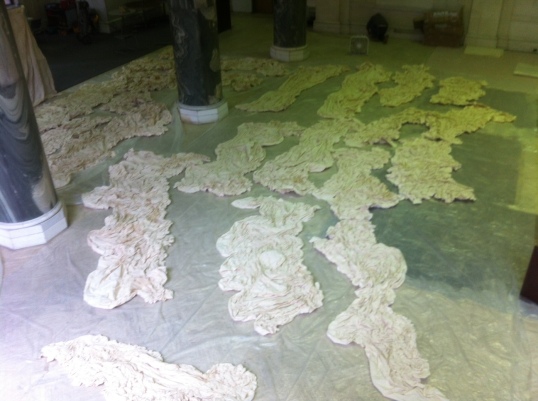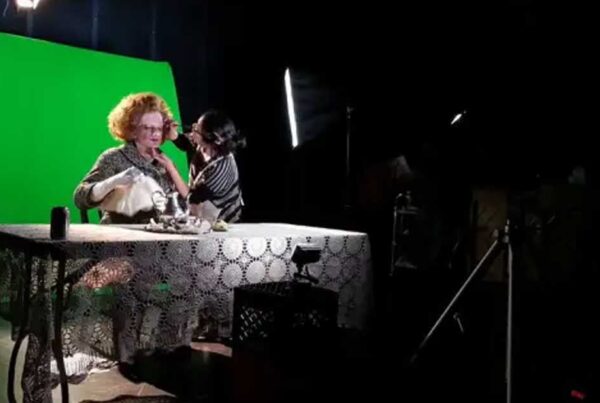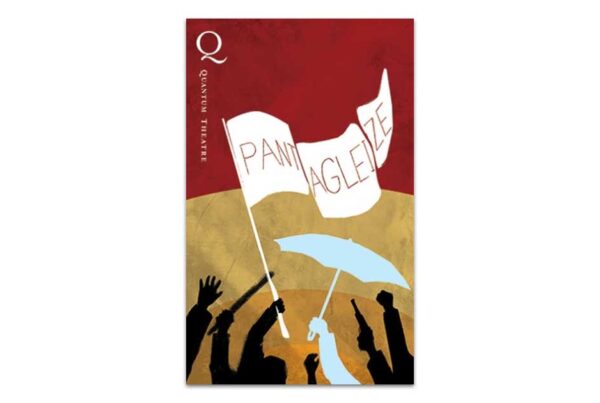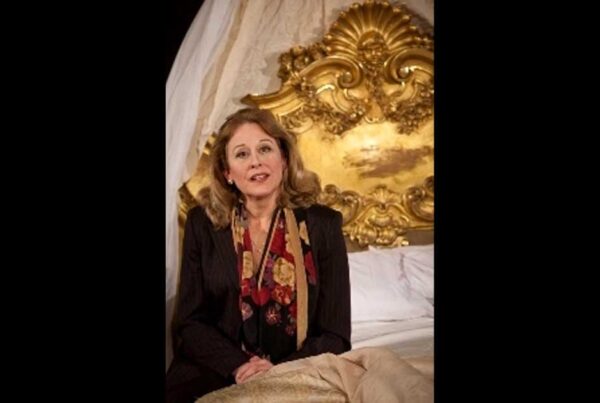You’re in Rome. Before you is a baroque suite in an expensive hotel overlooking the fountain of the Piazza di Spagna, the cascading beauty of the Spanish Steps. With the desperate and complex characters of J.T. Rogers’ Madagascar, you almost feel trapped inside the hotel room, trying to look around them, beyond them, to get a view of the world. But like the play’s characters June, Lillian, and Nathan, you’re in a shrouded place, a place obscured by secrets.

Larry John Meyers in ‘Madagascar’ (photo by Heather Mull)
The challenge for Scenic Designer Steffi Mayer-Staley and Assistant Scenic Designer Atticus Adams was this: transport that cast—and the audience—to this suite on the Spanish Steps. With the selection of The Carlyle building in the heart of Downtown, half their work was done. Three towering columns dominate the old Union National Bank lobby, where the play will be staged, and the room’s classic, marble-inlaid architecture recalls another era.
“There’s that monumentality in Rome,” says Adams. “And here, there are these columns—it was very apropos.” Adds Mayer-Staley: “It’s a grand space, which serves the play.”
“The marble looks great,” Adams says, “But these hard surfaces—the acoustics are really bad.” The problem of sound led the design team to create a subtle piece of set design that speaks to the play almost as much as the marble does. “Soft surfaces are the solution to bad acoustics,” Mayer-Staley says. “Fabric is, of course, the cheap solution… [And] the fabrics make sense on many different levels. Metaphor is a big part of it: shrouding, hiding, and uncovering.” To reduce echo, the design team hand-crinkled hundreds of square feet of muslin and hung the fabric like a burial shroud across the walls.

Preparing the fabric for full room shrouding.
The shrouds also cover the lower part of the lobby’s big windows, giving audiences a view of the surrounding architecture without the visual noise of modern signs and lights. “It will feel subterranean,” Mayer-Staley says. She and Adams draw a parallel between the underground feeling of the space and the play’s references to the Vestal Virgins. If a Virgin were found to have violated her oath of celibacy, she would be buried alive.

‘After Mrs. Rochester’ –06/07 Season
Steffi Mayer-Staley, an associate professor of Stage Design at Point Park University, has worked as a designer for a number of national, international, and Pittsburgh-based theater companies, including three Quantum Theatre productions. Atticus Adams is primarily a sculptor and installation artist whose work has been shown nationally, and is currently on exhibit at be Galleries in Lawrenceville. Madagascar is the artists’ first collaboration since Quantum Theatre’s After Mrs. Rochester in 2006.
Mayer-Staley explains, “As a designer, you want to give a foundation of reality while also letting the audience fill in the gaps. If a set is one hundred percent realistic, the audience only gets that one reality. We want to trigger the audience’s imaginations.”
Experience Mayer and Adams’ scenic design in Quantum Theatre’s Madagascar, beginning January 31 and running through February 16, at The Carlyle (corner of Fourth and Wood, downtown). Get tickets now online, or call 412-362-1713. Watch the official Madagascar trailer







